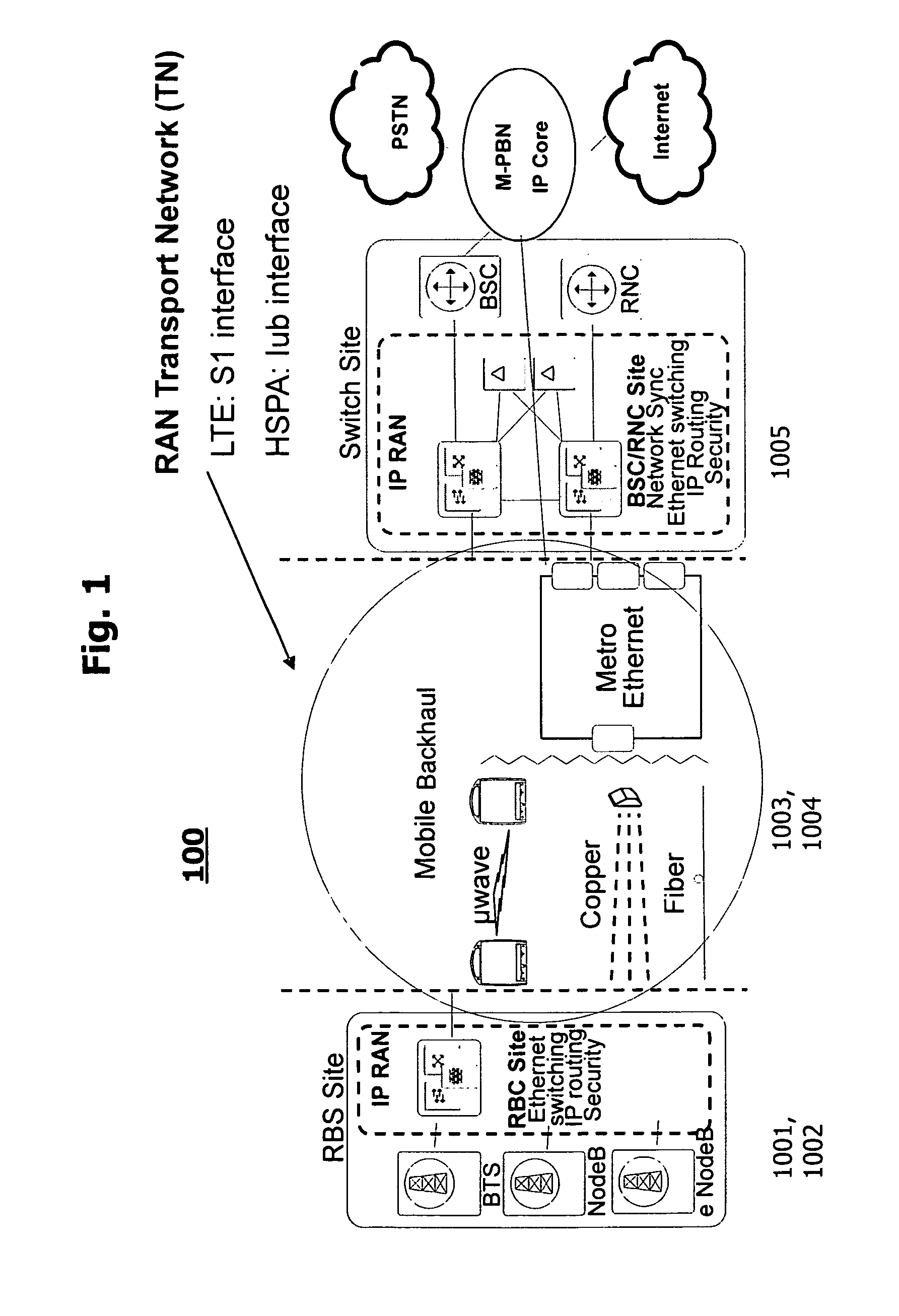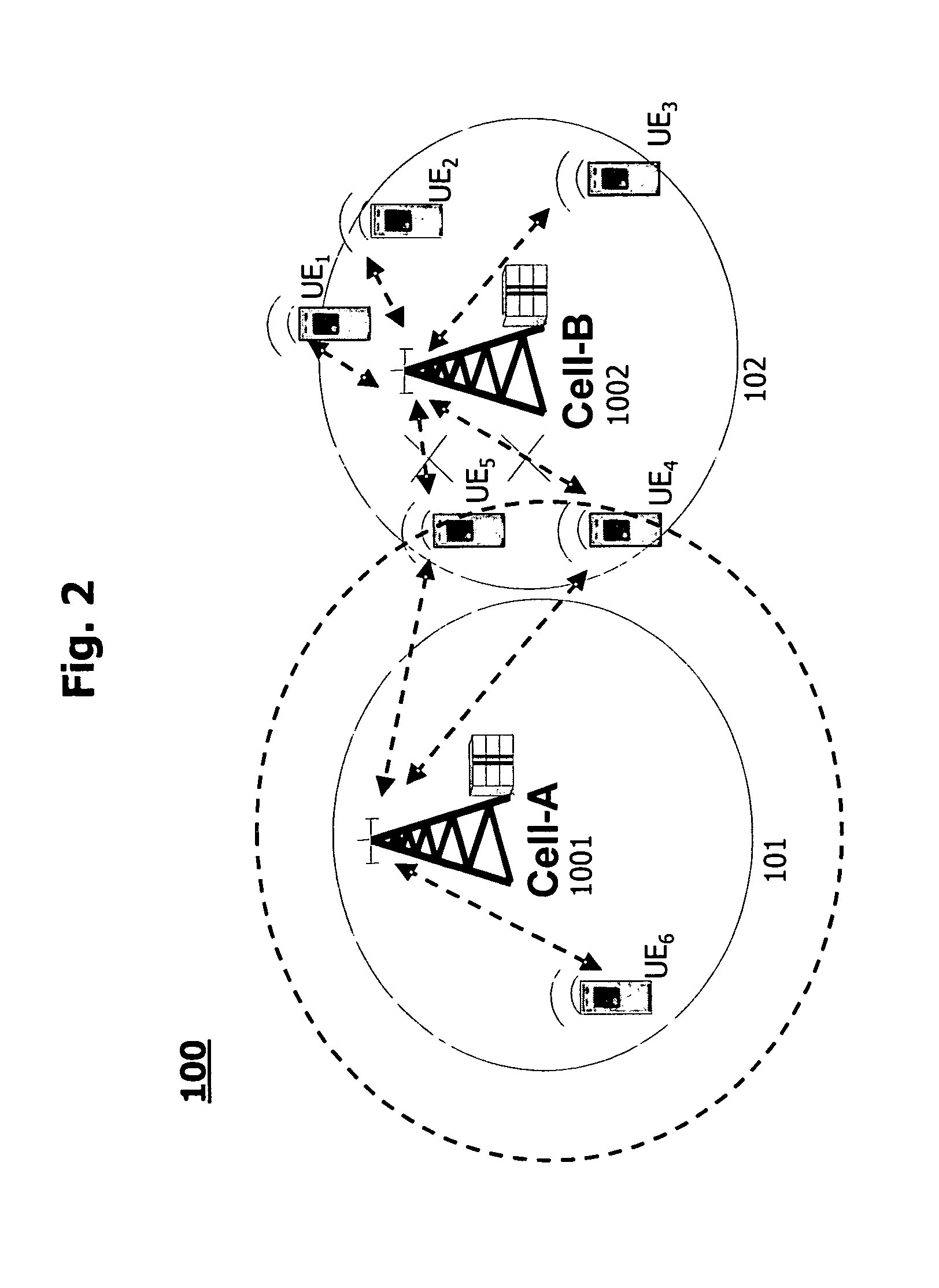Technique for Cable Interface-Based Load Balancing Between Cells
a load balancing and cell technology, applied in the field of intercell load balancing, can solve the problems of inability to deploy extra tn links, unutilized air interfaces, and high cost of third approaches, and achieve the effects of enlarging the cell, increasing air interface coverage, and increasing air interface coverag
- Summary
- Abstract
- Description
- Claims
- Application Information
AI Technical Summary
Benefits of technology
Problems solved by technology
Method used
Image
Examples
Embodiment Construction
[0064]In the following description, for purposes of explanation and not limitation, specific details are set forth (such as particular signalling steps) in order to provide a thorough understanding of the technique presented herein. It will be apparent to one skilled in the art that the present technique may be practised in other embodiments that depart from these specific details. For example, while the embodiments will primarily be described in the context of the control entity; however, this does not rule out the use of less or more devices to implement the present technique.
[0065]Moreover, those skilled in the art will appreciate that the services, functions and steps explained herein below may be implemented using software functioning in conjunction with a programmed microprocessor, or using an Application Specific Integrated Circuit (ASIC), a Digital Signal Processor (DSP) or general purpose computer. It will also be appreciated that while the following embodiments are describ...
PUM
 Login to View More
Login to View More Abstract
Description
Claims
Application Information
 Login to View More
Login to View More - R&D
- Intellectual Property
- Life Sciences
- Materials
- Tech Scout
- Unparalleled Data Quality
- Higher Quality Content
- 60% Fewer Hallucinations
Browse by: Latest US Patents, China's latest patents, Technical Efficacy Thesaurus, Application Domain, Technology Topic, Popular Technical Reports.
© 2025 PatSnap. All rights reserved.Legal|Privacy policy|Modern Slavery Act Transparency Statement|Sitemap|About US| Contact US: help@patsnap.com



